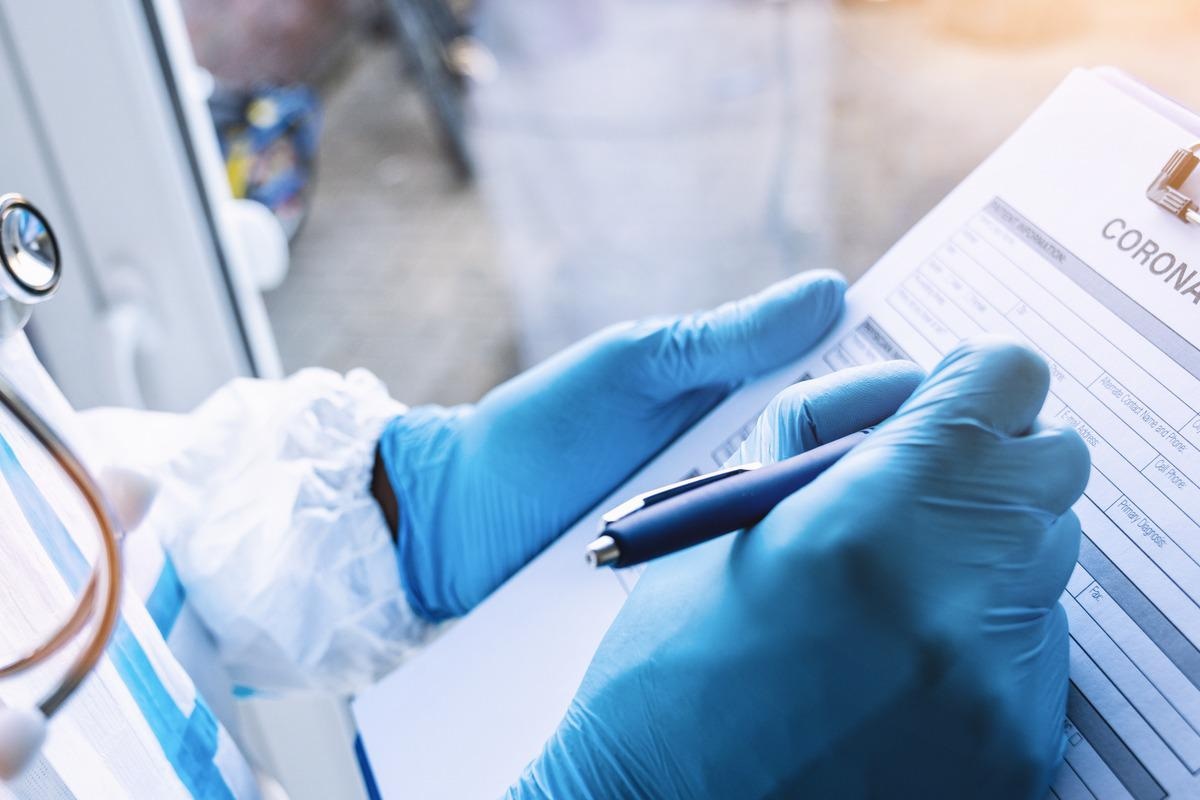Most coronavirus disease 2019 (COVID-19) tests can be split into categories. Polymerase chain reaction (PCR) assays can identify viral genetic material taken from nasopharyngeal swabs to discriminate between individuals who are currently infected and those who are not. Lateral flow devices are designed to identify either antibodies in blood samples to determine past infection, or, to identify specific epitopes from severe acute respiratory syndrome coronavirus 2 (SARS-CoV-2) to determine current infection.
 Study: Development of a T cell-based immunodiagnostic system to effectively distinguish SARS-CoV-2 infection and COVID-19 vaccination status. Image Credit: r.classen/Shutterstock
Study: Development of a T cell-based immunodiagnostic system to effectively distinguish SARS-CoV-2 infection and COVID-19 vaccination status. Image Credit: r.classen/Shutterstock
However, for vaccine and infection research, more specific tests are needed. Researchers from the Center for Infectious Disease and Vaccine Research have created a new T cell assay that allows discrimination of infection and vaccination, as well as the order in which these occurred.
The study
The researchers enrolled 239 participants into the study. These were then split into five groups based on their vaccination status and infection history. Fifty individuals each were placed into three different groups – non-vaccinated, non-infected (I-V-), infected and non-vaccinated (I+V-), and non-infected and vaccinated (I-V+), while 66 individuals had been infected and then vaccinated (I+V+) and 23 vaccinated and then infected (V+I+).
Infection was confirmed using PCR-testing or serological detection of anti-RBD antibodies at the time of blood donation. The majority of cases were mild, with typically ~5% of each group showing severe symptoms. Vaccinated individuals were classified as those who had received two doses of either the BNT162b2 vaccine or the mRNA-1273 vaccine.
To detect T cell reactivity against SARS-CoV-2, the researchers designed epitope pools based on experimentally defined epitopes based on the non-spike sequences of the proteome. The CD4RE and CD8RE megapools (MP) consisted of 274/621 peptides, respectively, and a pool of epitopes derived from EBV was used as a specificity control.
Activation Induced Marker (AIM) assays were used to assess the T cell reactivity. As expected, all convalescent/vaccinated individuals showed SARS-CoV-2 specific CD4+ T cell responses. Slightly more surprisingly, 50% of non-infected, non-vaccinated individuals showed the same. Similar responses were observed when the data were plotted as either absolute magnitude or stimulation index. Generally, individuals that had not been exposed showed lower reactivity than those who had been exposed, with individuals that had been both infected and vaccinated also showing more reactivity than individuals who had been either vaccinated or infected. CD4RE responses could also differentiate convalescent subjects, both vaccinated and unvaccinated, from unexposed and vaccinated subjects.
SARS-CoV-2 specific CD8+ T cell responses were detected amongst all cohorts that the researchers investigated, with nearly all convalescent/vaccinated individuals showing responses, and around a quarter of non-convalescent unvaccinated individuals responding. Once again, unexposed subjects could easily be identified by the significantly lower responses, and spike-specific responses showed very similar results. A commercially available IFN gamma assay was used to evaluate CD4+ and CD8+ T cell responses as well, which showed that both infected and vaccinated individuals had robust responses to the spike, CD4RE and CD8RE.
The CDR4E assay showed higher positive CD4+ T cell responses in I+V- individuals, as well as lower non-specific responses in I-V- individuals compared to the CDR4 in the AIM assay, demonstrating improved sensitivity and specificity, especially when the commercially available IFNgamma assay revealed very similar results. The scientists also point out that mass spectrometry studies show results more consistent with the CDR4E assay, as well.
Following this, the researchers further investigated the test by comparing the specific responses of each group to certain epitopes. They reasoned that I-V- individuals should be unreactive to the peptide pools, I-V+ individuals should only react to the S pool, while I+V- should recognize everything, but have a lower relative reactivity to the spike protein when compared to the I+V+ group. All of the I-V- subjects were successfully identified, with spike responses lower than 0.025%. Twenty-eight out of 30 vaccinated but non-infected individuals were identified successfully, with spike responses over 0.025%, but low CD4RE responses. The test was also able to identify 24 out of 27 I+V- subjects, as well as 26 out of 30 I+V+ subjects.
Finally, the researchers summarized the overall accuracy by clustering individuals who had been infected and vaccinated into a single group, no matter which event occurred first. When these were combined, the classification scheme showed a level of 86.6% accuracy when measured as a function of absolute magnitude. They retained high specificity for each individual group, further validating the scheme.
Conclusion
The authors highlight that they have successfully and accurately classified subjects with different vaccination and infection histories with up to 90% accuracy. While this is not the first occurrence, it is the first simple assay strategy that can do so by classifying T cell responses. This approach allows identification of exposure to SARS-CoV-2 even in vaccinated individuals, which could be very important in future vaccination studies as well as holding value for research into asymptomatic and breakthrough infections.
- Yu, E.D., Wang, et al. (2022). Development of a T cell-based immunodiagnostic system to effectively distinguish SARS-CoV-2 infection and COVID-19 vaccination status. Cell Host and Microbe. doi: https://doi.org/10.1016/j.chom.2022.02.003 https://www.cell.com/cell-host-microbe/fulltext/S1931-3128(22)00089-0
Posted in: Medical Science News | Medical Research News | Medical Condition News | Disease/Infection News | Healthcare News
Tags: Antibodies, Assay, Blood, Blood Donation, CD4, Cell, Coronavirus, Coronavirus Disease COVID-19, covid-19, Genetic, Mass Spectrometry, Nasopharyngeal, Peptides, Polymerase, Polymerase Chain Reaction, Protein, Proteome, Research, Respiratory, SARS, SARS-CoV-2, Severe Acute Respiratory, Severe Acute Respiratory Syndrome, Spectrometry, Spike Protein, Syndrome, Vaccine

Written by
Sam Hancock
Sam completed his MSci in Genetics at the University of Nottingham in 2019, fuelled initially by an interest in genetic ageing. As part of his degree, he also investigated the role of rnh genes in originless replication in archaea.
Source: Read Full Article
